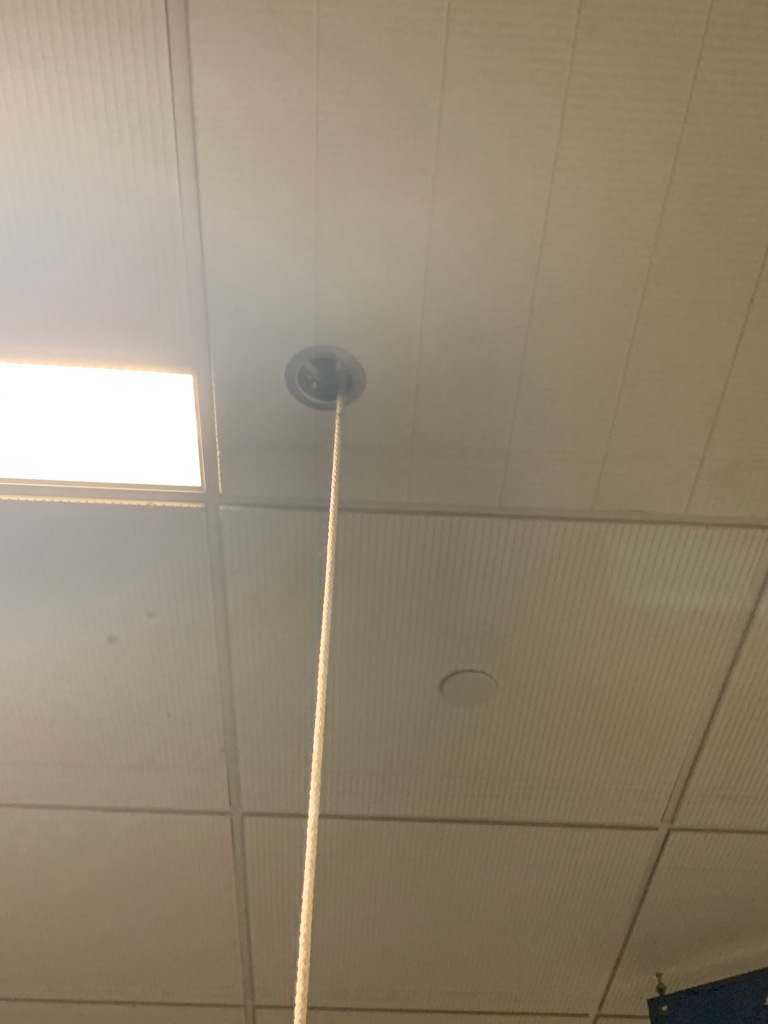

As technology marches forward, patterns of greater efficiency begin to materialize. For the sake of discussion, this process can be desconstructed into several elemental phases that lead towards a path of what can be called progressive iteration. These phases are described below as a case study of a ceiling rope is offered as an exemplar. The function of this rope is to open an interior door when pulled from a moving cart. The rope is positioned several feet from the door allowing the door to open prior to the cart completing its approach to the interior outlet behind the door.
This first phase is focused on getting the idea to work. This stage may involve trying several different approaches until one of them lands.

In the image above, the rope is attached to the ceiling, but its movement is uncontrolled and its appearance does not provide confidence.
The second phase starts with an examination of the current system that was setup in phase 1. This examination often yields a backlog of opportunities that can be overcome that were inhibiting the original system. Following this identification, a response is formulated to arrive at a technological state superior to the original.

The image above now controls the horizontal range of the rope where it meets the ceiling preventing material erosion of the ceiling tiles.
Finally, phase three puts a polish on phase 2 outcomes by positioning the technology closer to a state where it may be more readily adopted and replicated by others. Questions such as “How can this be more efficient?” are asked. Materials can be reduced and functionality can become more reliable after tollerances and margins are better understood.

In the image above, astetics are greatly improved. Other advantages such as reduced materials of the steel reinforcement ring also yield a higher level of visual appeal.
In dealing with real world realities such as time constraints, it is not always possible to work through all three phases of progressive iteration until a compelling reason avails itself. The goal is often to satisfy multiple goals and in the end success can be measured by the phrase “Good enough for who it’s for.”
Last modified: 02/21/2023